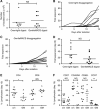Efficient and reproducible generation of tumour-infiltrating lymphocytes for renal cell carcinoma
- PMID: 25867267
- PMCID: PMC4453687
- DOI: 10.1038/bjc.2015.96
Efficient and reproducible generation of tumour-infiltrating lymphocytes for renal cell carcinoma
Abstract
Background: Tumour-infiltrating lymphocyte (TIL) therapy is showing great promise in the treatment of patients with advanced malignant melanoma. However, the translation of TIL therapy to non-melanoma tumours such as renal cell carcinoma has been less successful with a major constraint being the inability to reproducibly generate TILs from primary and metastatic tumour tissue.
Methods: Primary and metastatic renal cell carcinoma biopsies were subjected to differential tumour disaggregation methods and procedures that stimulate the specific expansion of TILs tested to determine which reliably generated TIL maintained antitumour specificity.
Results: Enzymatic or combined enzymatic/mechanical disaggregation resulted in equivalent numbers of TILs being liberated from renal cell carcinoma biopsies. Following mitogenic activation of the isolated TILs with anti-CD3/anti-CD28-coated paramagnetic beads, successful TIL expansion was achieved in 90% of initiated cultures. The frequency of T-cell recognition of autologous tumours was enhanced when tumours were disaggregated using the GentleMACS enzymatic/mechanical system.
Conclusion: TILs can be consistently produced from renal cell carcinoma biopsies maintaining autologous tumour recognition after expansion in vitro. While the method of disaggregation has little impact on the success of TIL growth, methods that preserve the cell surface architecture facilitate TIL recognition of an autologous tumour, which is important in terms of characterising the functionality of the expanded TIL population.
Figures




References
-
- Besser MJ, Shapira-Frommer R, Itzhaki O, Treves AJ, Zippel DB, Levy D, Kubi A, Shoshani N, Zikich D, Ohayon Y, Ohayon D, Shalmon B, Markel G, Yerushalmi R, Apter S, Ben-Nun A, Ben-Ami E, Shimoni A, Nagler A, Schachter J. Adoptive transfer of tumor-infiltrating lymphocytes in patients with metastatic melanoma: intent-to-treat analysis and efficacy after failure to prior immunotherapies. Clin Cancer Res. 2013;19:4792–4800. - PubMed
-
- Besser MJ, Shapira-Frommer R, Treves AJ, Zippel D, Itzhaki O, Hershkovitz L, Levy D, Kubi A, Hovav E, Chermoshniuk N, Shalmon B, Hardan I, Catane R, Markel G, Apter S, Ben-Nun A, Kuchuk I, Shimoni A, Nagler A, Schachter J. Clinical responses in a phase II study using adoptive transfer of short-term cultured tumor infiltration lymphocytes in metastatic melanoma patients. Clin Cancer Res. 2010;16:2646–2655. - PubMed
-
- Bouet-Toussaint F, Genetel N, Rioux-Leclercq N, Bansard JY, Leveque J, Guille F, Patard JJ, Lesimple T, Catros-Quemener V. Interleukin-2 expanded lymphocytes from lymph node and tumor biopsies of human renal cell carcinoma, breast and ovarian cancer. Eur Cytokine Netw. 2000;11:217–224. - PubMed
-
- Danilova E, Skrindo I, Gran E, Hales BJ, Smith WA, Jahnsen J, Johansen FE, Jahnsen FL, Baekkevold ES. A role for CCL28-CCR3 in T-cell homing to the human upper airway mucosa. Mucosal Immunol. 2015;8 (1:107–114. - PubMed
MeSH terms
Grants and funding
LinkOut - more resources
Full Text Sources
Other Literature Sources
Medical

